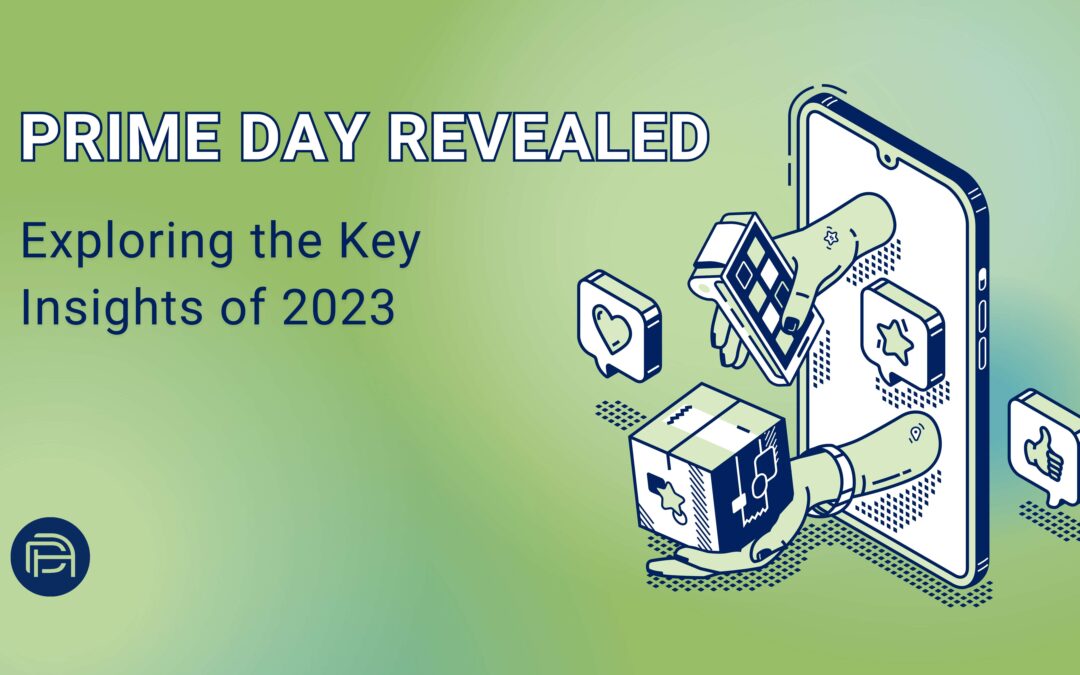Amazon Prime Day 2023 was held on July 11th and 12th, and the data is becoming clear Amazon has had another record-breaking year. With this year’s shopping event now behind us, we’re highlighting some of the most interesting data trends from Prime:
Better Economic Headwinds
The initial sales data broadly indicates that the more recent inflation trends had a positive effect on buying habits this year. Over half (57%) of households placed 2+ orders, and 11% placed 5+ orders within the first 32 hours of the event*.
Leading up to the event, it was clear that brands encountered significant pressure to participate in Prime Day and offer substantial discounts, due to slower overall growth in the first half of 2023. Prime Day also served as a “catch up” strategy for a great majority of brands to get back ahead of their annual sales targets.
Demographics & Purchase Behaviors
The top demographic during this year’s event was high income, suburban females, ages 35-44. This general trend correlates to the product trends, as the top product categories during Prime Day included home goods (28%), household essentials (26%), and apparel & shoes (24%). Average order size reached $54.05, representing a notable increase of 3.4% from the previous year. Among those orders, 57% of Prime Day items were priced below $20, with 5% surpassing the $100 threshold. The average expenditure per item stood at $32.35.*
This was also an interesting year for evaluating product trends. Among the top five items sold – Temptations Cat Treats, Amazon Fire TV Stick, Liquid I.V. Packets, Apple Watch Series 8, and Melissa & Doug Toys – two were household or grocery products.
Advertising Trends
Across a few key eCommerce categories, we saw the following results:
Gaming: +75% of sales velocity came in the first 24 hours, with CVR being +52% stronger than Day 2. That doesn’t mean people were not still shopping on Day 2, as the combined total sales exceeded last year’s ordered revenue total by +40%.
Beauty/Skin Care: Unlike other categories, the Beauty/Skin Care vertical saw relatively even performance between Day 1 and Day 2 of Prime Day, resulting in +56% growth in sales. Unlike other categories that rely heavily on promotions, some skin care brands were more selective with their discounting strategy and opted to protect margins in lower price point categories.
Grocery: While not traditionally a core category during Prime Day, Grocery showed huge improvements YoY for traffic (+119%) and sales (+50%). Sharp rises in CPC costs were more pronounced here as well, rising +20% from 2022.
Medical Devices: The vast majority of medical device consumers opted to buy on the 1st day – with 60% of orders and sales increasing YoY. More interestingly, consumers did not want to wait for Day 2 to make their purchases, as we saw CPCs and CPA increasing by 16% and 38% respectively.
Retail Media is Here To Stay
Finally, as Direct Agents anticipated in our Digital Transformation article, “Retail Media Alert: Prime Day is on the Horizon,” Retail Media was a clear winner during Prime Day.
54% of shoppers cross-checked Amazon’s prices with those of other retailers, with Walmart (36%) and Target (25%) being the most commonly referenced competitors. Moreover, 34% of shoppers expressed their intent to explore or participate in Target Circle Week, 33% focused on Walmart+ Week, and the remaining 37% of consumers indicated their preference not to engage in any other sales events during the summer period.
Walmart: Consumers across CPG categories had their highest CVR and CTR’s on Days 3 and 4 of the Walmart promotional period. It is most likely that consumers opted to participate in Amazon Prime Day on Tuesday and gravitated towards the Walmart promotion in the later days.
Target: Target’s promotional event lasted the entire week. Similarly to Walmart, its CVR and CTR peaked on Tuesday and shoppers converted the most while using the Target App, contributing to around 86% of total sales.
The insights gathered from Prime Day 2023 reflect the importance of analyzing shifting trends in consumer behavior and developing a flexible Retail Media strategy for future shopping events. For more information on Prime Day or to start building your strategy for Fall Prime Day, please reach out to [email protected].
Nicholas Galante, VP of eCommerce, Direct Agents
*source: Numerator



